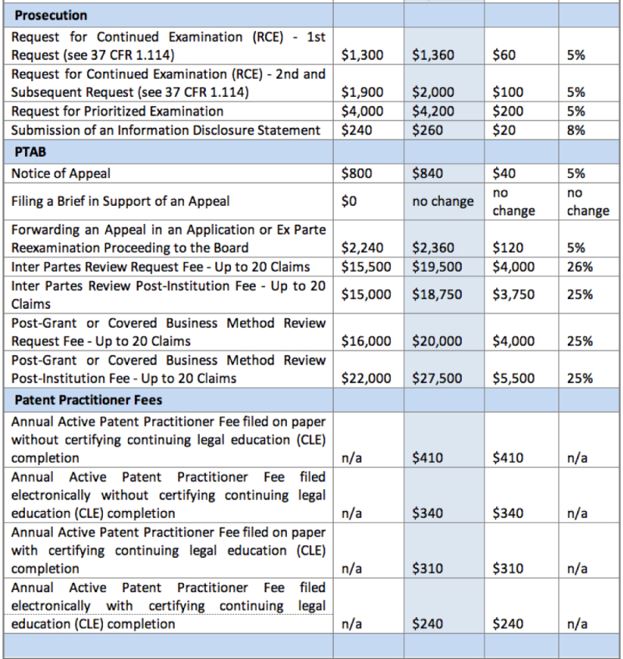Design Day 2022 Highlights
On April 21, 2022, the United States Patent and Trademark Office hosted its annual Design Day event, featuring speakers discussing recent developments in design patent practice. The virtual event was joined by over 600 attendees.
The amount of design patents filed in FY2021 increased by 17.6% over the previous year, to a total of 54,201 applications, a new record for the USPTO. The increase in design patent applications shows the recognition of the value of design patent protection by inventors and rights holders. Of those filings, 40.4% originated in the United States, while 30.5% were from China. As a consequence of the increased volume of filings, first action pendency increased to 16.6 months, while total pendency remained relatively flat at 21 months.
The next presentation focused on the anticipated entry of China into the Hague system in May 2022. The Hague system allows an applicant to file a single international application for a single international registration, which is then examined according to the laws of each contracting party designated in the registration. With China’s entry on May 5, 2022, the Hague system will include 76 contracting parties, covering 94 countries.
To align with the requirements of the Hague Agreement, China has updated its design laws to increase the patent term from 10 to 15 years, and to include protection of partial designs. Prior to this update, the entire article of manufacture was required to be claimed in a Chinese design patent application. After May 5, applicants for Chinese design protection will be able to disclaim subject matter in broken line, allowing the claiming of only the desired portions of an article.
Subsequent speakers discussed suggestions for effective appeal briefs and examiner’s answers, particularly for obviousness rejections. For examiners, it was recommended to construe the claim when helpful, create a composite of multiple references, and address the differences and their effect on overall similarity. For practitioners, it was recommended to determine the differences and the overall visual impression created by the differences alone and when viewed in the composite of multiple references. The visual impression of the composite can then be compared to the claimed design and the difference between the two determined.
The Patent Trial and Appeal Board’s views on the obviousness of changes in proportion were also discussed. With respect to changes in proportion, many examiners have relied on In re Stevens, 173 F.2d 1015 (1949), which stated that changes in proportion as per se obvious. However, the PTAB has now been giving consideration as to how mere changes in proportion can create a significant difference in the overall visual impression of an article. In particular, in In re Salas, 2019 WL 7790867 (2019) the PTAB declined to view Stevens as a per se rule that all changes in arrangement and proportion are unpatentable. Rather, board referred to In re Blum, 364 F.2d 904 (1967) which stated that there are no portions of a design that are immaterial or not important.
In re Surgisil was a 2021 Federal Circuit decision that changed long-standing anticipation analysis for design patents. Prior to this case, examiners relied on In re Glavas, 230 F.2d 447 (1956), which stated that anticipation of a design does not require that the prior art and the claim design were from analogous art. In the Surgisil case, the examiner rejected the design of a lip implant based on the appearance of an art tool. The applicant appealed to the PTAB, which affirmed the rejection, stating that only minor differences exist between the two designs, and the article of manufacture can be ignored for the purposes of determining the claim scope. However, the Federal Circuit reversed, holding that the board decision was erroneous, and that the claim language should match the article that is identified. Consequently, the art tool could not anticipate a design of a lip implant. Subsequent to Surgisil, the test for applicable prior art for designs would now depend on the particular article of manufacture to which the design is applied.
In re Maatita: in this 2018 case, the Federal Circuit held that some designs, for example shoe bottoms, are capable of being enabled by a single plan view drawing. This has led to filings where complex, three-dimensional objects, such as ceiling fans, are depicted by a single, perspective-view drawing, with examiners rejecting those as non-enabled and indefinite. Board decisions have considered this scenario to be a different factual inquiry than that in Maatita. For example, foreshortening distortions due to perspective can introduce uncertainty to the design claim in certain circumstances. At this point, the sufficiency of a single perspective view is not dictated by Maatita, but rather is decided based on a case-by-case analysis.
For more information and analysis regarding design patent protection in the United States and abroad, as well as analysis regarding the impact of these recent developments on your IP rights, please feel free to reach out to us.

